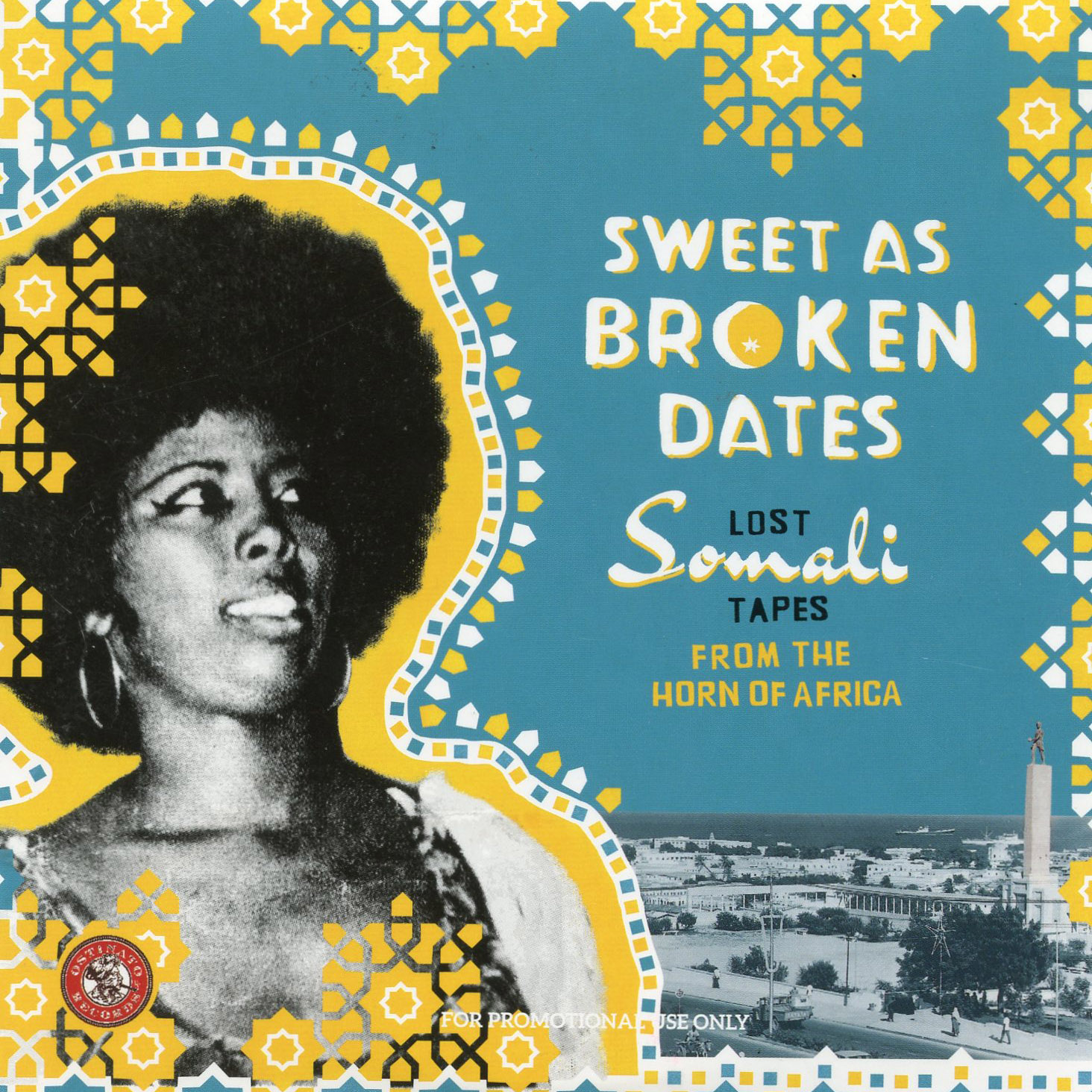How quickly it happens! In the chaotic wake of colonial history, cultures collide and blend and find extraordinary expression in new hybrid music. A scene develops and seizes the imagination of a generation. Composers, singers and bands flourish, producing a timeless repertoire of recordings. Then war comes, and in the space of a decade, all this is dispersed and destroyed. When it’s over, the world has changed. A new generation has come, with new aspirations and little or no memory of, or feeling for, what went before. And just like that, the music that briefly floated the hopes and dreams of a generation survives only in compilations like this one, and in the broken memories of surviving veterans scattered around the world.
Listening to these soulful, funky, melodious, quirky and wonderful tracks, one can only imagine what it would have been like had Somalia avoided civil war and this musical world been allowed to evolve gracefully into the present. Think of Mali or Senegal, places where African Islamic cultures also absorbed and transformed international musical trends with spectacular results, places where the innovations of the ‘60s and ‘70s not only survive in priceless recordings, but have continuously responded to aesthetic changes ever since, yielding a successive stream of unique music up to the present. Instead, we have a history more akin to that of Sudan and Ethiopia, neighboring East African nations where conflict and repression also crushed once-promising urban music laboratories.
That is the context in which compilers Vik Sohonie and Nicolas Sheikholeslami have worked to produce this stand-out collection. The music is filled out with rich liner notes, historical essays and interviews that bring the sounds vividly to life. These songs were created and recorded in Somalia between 1969 and 1988, all in the context of the socialist/military regime of Siyaad Barre. Barre was no cultural visionary, nothing like Sekou Toure in Guinea with his deep belief in music as a tool for building national identity. Yes, there was some government support for Somalia’s police, military and theater musical ensembles. But some of the most brilliant music here was created by privately run nightclub bands such as Dur Dur and Iftiin in Mogadishu, and Danan Hargeysa in the northern city of Hargeisa. These artists were expected to sing for the state, and were subject to censorship and harassment. Musicians were sometimes jailed and driven into exile, even during the rich heyday documented here.
But about the music. It’s a fascinating blend of Somali tradition, Indian film music aesthetics, James Brown funk, West African Afrobeat, and, apparently, reggae. The reggae part is intriguing. We hear it over and over in the ambling organ and guitar vamps in songs like “Buuraha U Dheer (The Highest Mountains),” “Rag Waa Nacab Iyo Nasteexo (Men Are Cruel and Kind),” “Gorof (Elixir),” “Uur Hooyo (Mother's Womb)” and “Qays Iyo Layla (Romeo and Juliet).” Some of the later tracks may well have incorporated ideas from Jamaican production; after all, Somali nightclub bands did cover Bob Marley and Jimmy Cliff songs. But veteran Somali musicians insist that the source of this ubiquitous rhythm is not Jamaica, but rather the dhaanto rhythm from the Ogaden region of Ethiopia. Ogaden is one of five culturally Somalian regions that leaders had hoped to reunite upon independence in 1960. That aspiration, never realized, is symbolized in the five-pointed star on the Somali flag.
These songs were born during a peak literary period in Somalia, a time when poetry and theater flourished and song lyrics were expected to hew to a high level of artistry and wisdom. That richness can only be hinted at for outsiders, but it comes through in the expressiveness of vocalists like Dur Dur Band star Muqtar Idi Ramadan, Mahmud Abdalla "Jerry" Hussen and Maryan Naasir of Iftiin Band, and wildly soulful divas Faadumo Qaasim and Hibo Nuura.
The stylistic juxtapositions in the music are a consistent delight: reggae-like bounce with soaring Indian strings on “Rag Waa Nacab Iyo Nasteexo,” Indian sounding melodies on keyboard and trumpet set within a brassy, organ-driven romp on “Kadeed Badanaa Naftaydani (My Life Is Full of Tribulations),” or slow, soulful blues à la “It’s A Man’s World” paired with soaring, high, vibratoless vocal from Faduumina Hilowle. This last one sounds oddly similar to the Cambodian pop of the same era so memorably revived by the band Dengue Fever. Dur Dur Band’s “Duruuf Maa Laygu Diidee (Rejected Due to My Circumstance)” adapts a traditional song from the original inhabitants of Mogadishu with a vaguely Latin lilt and terrific brass and guitar arranging.
On Hibo Nuura’s “Haddii Hoobalkii Gabay (If the Artist Lets You Down),” accordion stands in for a brass section over a chugging r&b groove. This song title echoes Nuura’s poignant comment after the imposition of a dusk-to-dawn curfew in 1987, that artists had “let the country down” by not inspiring a stronger culture of resistance that might have avoided catastrophe.
Part of that catastrophe involved the apparently deliberate bombing of theaters and studios. These recordings were not especially well made in the first place, but the masters were mostly destroyed, so what survives here comes from cassette copies with lamentably poor audio quality. That’s a major difference with the parallel saga of Ethiopian pop. There, a wondrous music scene was also crushed, but more and better recordings have survived from the 1960s-70s heyday, as evidenced in the multivolume Éthiopiques collection.
But don’t let that dissuade you. This lo-fi set of songs is a high-reward treat. Kudos to the persistence and diligence of its fearless compilers. For much more on this unique period of East African musical creativity, don’t miss Afropop’s Hip Deep program, "Reconstructing Somalia: Love Songs at the Birth of a Nation."









